-
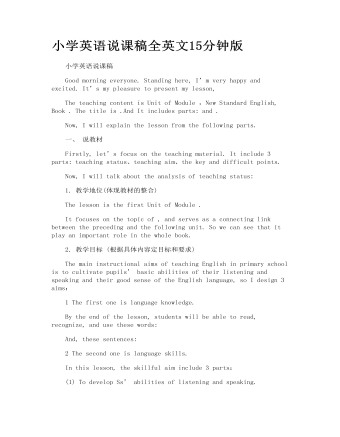
小学英语说课稿全英文15分钟版
一、 说教材 Firstly, let’s focus on theteaching material. It include 3 parts: teaching status、teachingaim、the key and difficult points. Now, I will talk about the analysis of teaching status: 1. 教学地位(体现教材的整合) The lesson is the first Unit of Module . It focuses on the topic of , and serves as a connectinglink between the preceding and the following unit. So we can see that it playan important role in the whole book. 2. 教学目标 (根据具体内容定目标和要求) The main instructional aims of teaching English inprimary school is to cultivate pupils’ basic abilitiesof their listening and speaking and their good sense of the English language,so I design 3 aims:
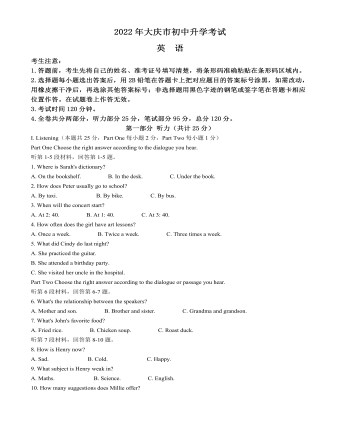
2022年黑龙江省大庆市中考英语试题(解析版)
On a snowy day, there was a man walking in ahurry on the road. His clothes were in poor condition. You might think he was abeggar(乞丐),but in fact he was a painter. His name was Vincent Willem van Gogh.
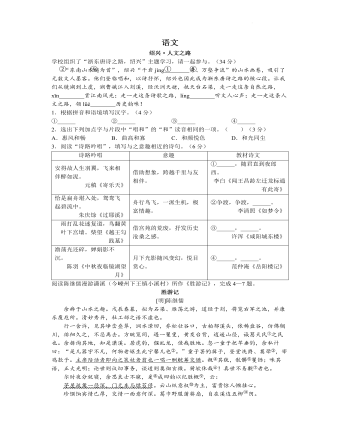
2022年浙江省绍兴市中考语文真题及答案
一只蜉蝣从水里一点一点钻出来。远远的天边,一个红红的家伙一点一点冒上来。蜉蝣高兴地和它打招呼:“你好,你很神奇呀,你一来世界就亮了。”“你好,小蜉蝣。”“你认识我?你是谁呀?”“我是太阳。”“太阳,我好快乐呀,我有一天的生命,你和我一样吗?”
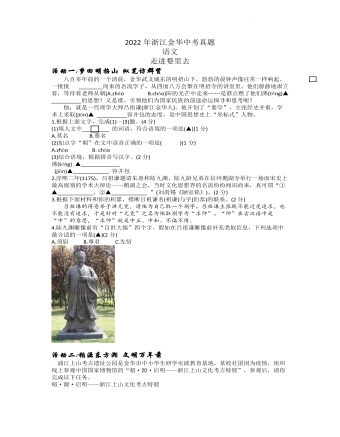
2022年浙江省金华市中考语文真题及答案
“幸好!”妈妈笑道,“走出五里路我就哭了,一哭哭了几百里……”常乐想问为什么,忽然响起一片古怪的声音。满池塘都在怪叫。常乐像皮球一样弹到妈妈怀里,大叫:“水里有怪物!”
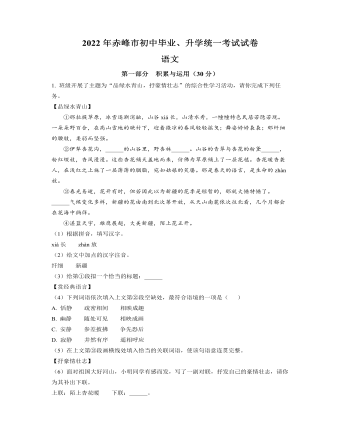
2022年内蒙古赤峰市中考语文真题(解析版)
题稚川山水【唐】戴叔伦松下茅亭五月凉,汀沙云树晚苍苍。行人无限秋风思,隔水青山似故乡。注:戴叔伦,唐代诗人,此诗作于作者宦游途中。
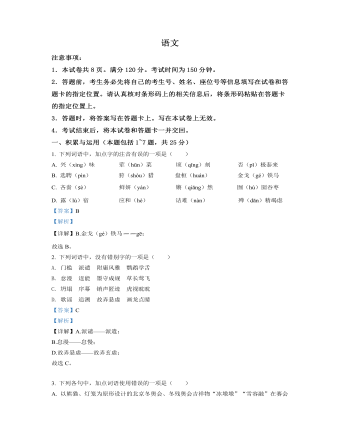
2022年内蒙古包头市中考语文真题(解析版)
夜来似闻某人素心,明日试往看之,入其门,窥其闺,见所谓某人方据案面南看一文书。顾客入来,默然一揖,便拉袖命坐,曰:“君既来,可亦试看此书。”相与欢笑。日影尽去,既已自饥,徐问客曰:“君亦饥耶?”不亦快哉!
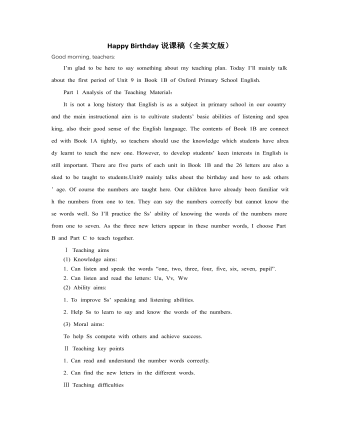
人教版新课标PEP小学英语三年级上册Happy Birthday(全英文版)说课稿
1. Do some exercise on the paper. There are four kinds of exercise here. The exercise 1 is to develop Ss’ ability of listening. Exercise 2 is to practice Ss’ ability of knowing the words. Exercise 3 is to develop Ss’ ability of speaking numbers and letters. Exercise 4 is to make Ss know the words and letters well. These exercises can consolidate the new knowledge from different styles of problems.2. Then tell Ss that we can sing the numbers like “ Do, re, mi, fa, so, la, ti, do” and let them listen to a song named “Do, Re, Mi”. Add some extra knowledge so that Ss will be glad to see that the numbers can be used in another way.Step 4 Homework1.Read the numbers from 1 to 7 and 7 to 1 five times.2.Read the letters “u, v, w” five times follow the tape.Reading is a useful way for the Ss of Grade One to practice the knowledge. Ask Ss to imitate reading from the tape in order to make Ss have a good habit of listening and let them have a better pronunciation.Step 5 Board writingI ‘ll put the seven numbers like a scale(音阶)as I’ll let Ss know that we can sing out the numbers. When it comes to listen to the song, I ‘ll draw a musical note on Bb. Unit 9 Happy birthday!sevensixfivefourthree U u V v W wtwo pupil five windowoneThat’s all for my class designing. Thank you for listening!
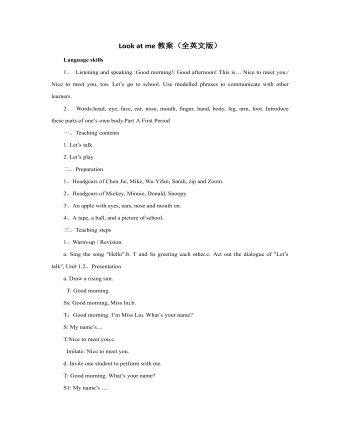
人教版新课标PEP小学英语三年级上册Look at me教案(全英文版)
3、Practicea. Nice to meet you. Nice to meet you,too.b. Perform the dialogue.c. Arrange the dialogue according to the pictures or sentence cards.d. Let’s play.A: Good afternoon,B. This is C. Hello, C! Nice to meet you.C: Nice to meet you, too.A,B: Goodbye!C: Bye!4、Assessment Workbook page 10Add-activitiesa. Listen to the recording and repeat.b. Make a dialogue according to "Let’s talk".Second Period一、Teaching contents1. Let’s learn Words:body, leg, arm, hand, finger, foot.1. Let’s do二、Preparation1、a puppet2、Cards of body, leg, arm, hand, finger and foot.3、headgear of a captain三、Teaching steps1、Warm-up/ Revisiona. Captain says to review "let’s do" of Part A.b. Perform the students their own dialogues.2、Presentationa. Learn to say "body, leg, arm, hand, finger and foot."b. Listen to the recording and repeat.c. Let’s do. Clap your hands. Snap your fingers. Wave your arms. Cross your legs. Shake your body. Stamp your foot.3、Practicea. Let’s draw a person.b. Let’s do. Point out which picture.c. Let’s do. Who responses faster.4、Assessment Workbook page 115、Add-activitiesa. Listen to the recording, repeat and act out.b. Say all the names of the body to your parents.Third Period一、Teaching contents1. Let’s check2. Let’s chant二、Preparation1、stationeries1、pictures of parts of Zoom
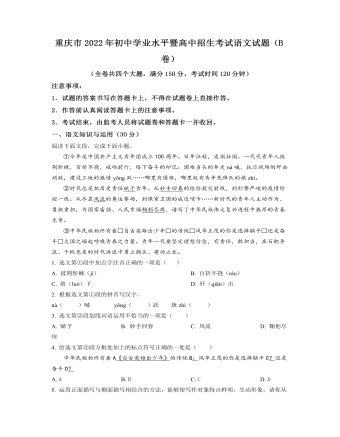
2022年重庆市中考语文试卷(B)及答案
在厨房蒸馒头的母亲,揭开锅盖高兴地说到:“馒头笑了。”我没看出来,就问她怎么笑的。母亲说:“就是馒头开口了,过年了,讨个吉利,所以要说笑了才行。”
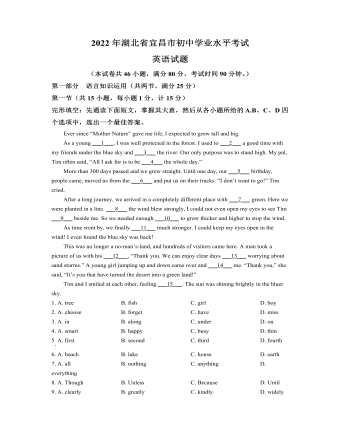
2022年湖北省宜昌市中考英语试题(解析版)
Duringwork hours in Becker’s bread shop, the kitchen is especially quiet except thesound of the machine. The quiet environment is not the result of the strictrules, but because all the workers are deaf. They use sign language tocommunicate with each other from time to time.
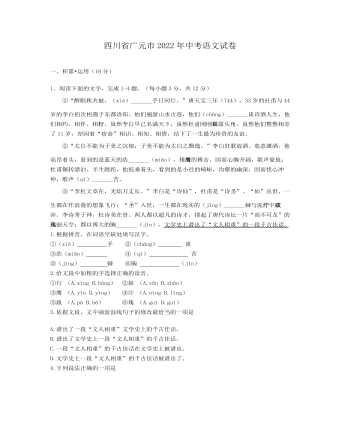
2022年四川省广元市中考语文试卷及答案
予谓菊,花之隐逸者也;牡丹,花之富贵者也;莲,花之君子者也。噫!菊之爱,陶后鲜有闻。莲之爱,同予者何人?牡丹之爱,宜乎众矣。
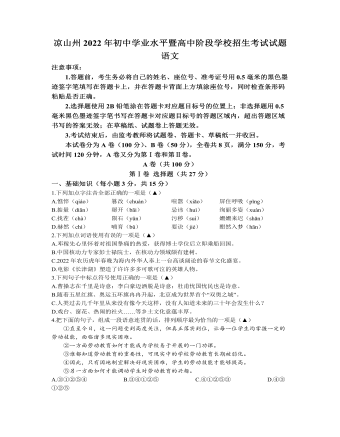
2022年四川省凉山州中考语文真题及答案
米吃多了,就有了想法。诗人说“米是漫山遍野的精灵,是生长绿色的种子,是陆地结的珍珠”,我也有这个感觉。有时我看到掉在桌上的一粒米,会产生一番联想:这粒米,不知道是哪粒种子被种在土里,经过了多少风霜雨雪,又被哪个农民精心养育,浇水、施肥、捉虫、打药,顶着酷暑烈日收割了来,再冒着酷暑高温脱了粒。脱一遍还不算,再脱一层皮,再脱一层皮,成为白白亮亮的精米,大有缘法落到我的饭碗里,结果不等它入口,就被轻轻抛弃,假如这米有灵,不知道会不会伤心?
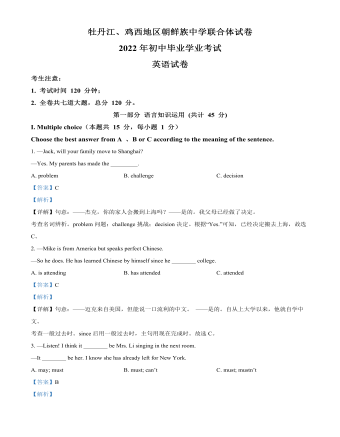
2022年黑龙江省牡丹江市、鸡西地区朝鲜族学校中考英语真题(解析版)
A: Hi Lisa. You don’t look well. __________21__________?B: I have a stomachache. A: __________22__________?B: I started to feeluncomfortable last night. A: Last night? __________23__________?
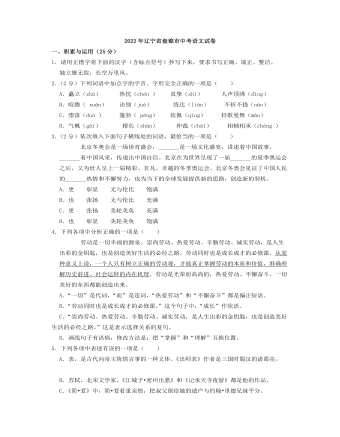
2022年辽宁省盘锦市中考语文真题及答案
①我妈是一个知青,我爸是一个农民。在我幼时的岁月里,我爸应该很辛苦。只有他一个农村户口,却有三个城里人要养活,他的田地太少了。但他勤快,愿意为生活付出所有气力。据说我家永远是每亩地里出钱最多的人家,而他的女儿们却几乎没去过那片土地。
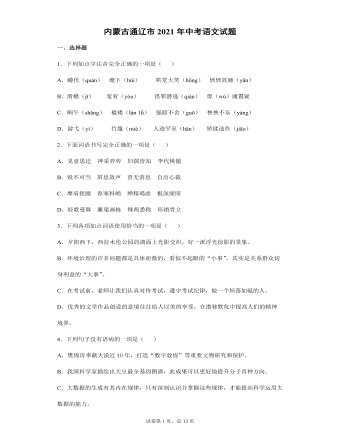
2021年内蒙古通辽市中考语文真题(解析版)
妈妈19岁嫁给爸爸。外婆生育了6个孩子,还领养了一个,但妈妈是唯一的女儿,在那个年代,虽然说不上能享受到多少宠爱,但至少没有遭受过任何对女性的轻慢,妈妈甚至还念到初中毕业,字写得比我还好,能自由阅读文学作品。
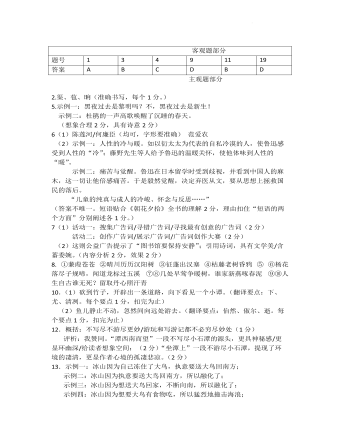
2022重庆中考语文A卷答案
作者通过举例,更具体地说明了“自下而上找结构”的方法;/作者分步骤,更为清晰地讲解了如何从庞杂信息中找到结构;/作者通过高度概括(提炼观点),使读者更为快速地了解从庞杂信息中找到结构的方法。
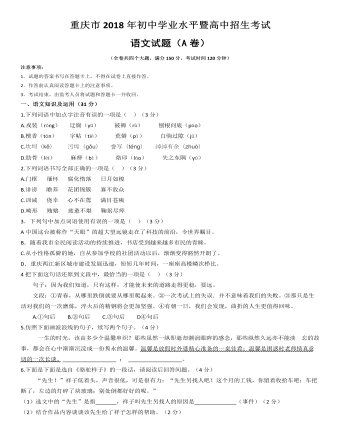
2018年重庆市中考语文试卷(A)及答案
好景不长,真应了儿媳的那句话,孩子患有先天性心脏病,得赶紧做手术。王婆婆摸了摸缝在贴身衣兜里的两千块钱,这可是她这些年来起早贪黑拾荒换来的棺材钱啊!可一看到孩子那清澈的眼神,她心一横牙一咬,撕开了衣兜,双手颤抖着揭开一个用塑料布一层又一层包裹着的小袋子,就像一层层剥开自己的心。
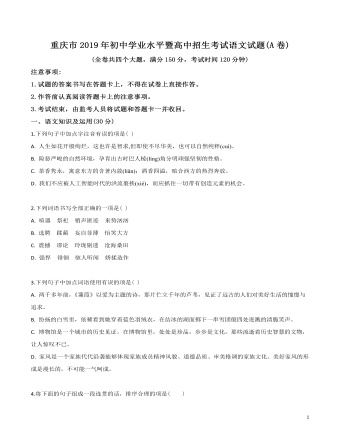
2019年重庆市中考语文试卷(A)及答案
“我说的不是这个,是老宅的,老宅的那个。”母亲的语气和神情有些焦急。我和母亲几乎把家里翻了个底朝天,也没找到母亲要找的钥匙。母亲坐下来,情绪有些低落。我说,妈,您就别总想着老宅了,咱又不回去住了,有没有钥匙都一样。母亲叹了一口气,开始收拾地上的凌乱。
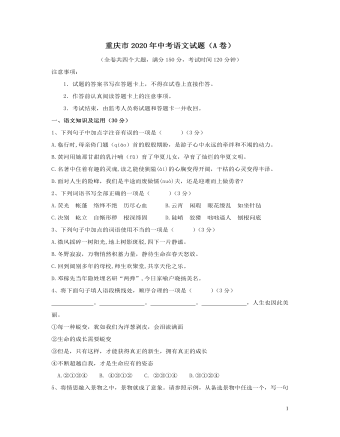
2020年重庆市中考语文试卷(A)及答案
每个人或多或少都会有一定的负面情赌,处于青春期的中学生也不例外。考场失利、友谊翻船、同学嘲笑、父母唠叨……都有可能使你陷入控败、沮丧、愤怒、厌烦等负面情绪中。这些情绪如果得不到及时疏导,就有可能爆发,不同程度地影响人际关系。
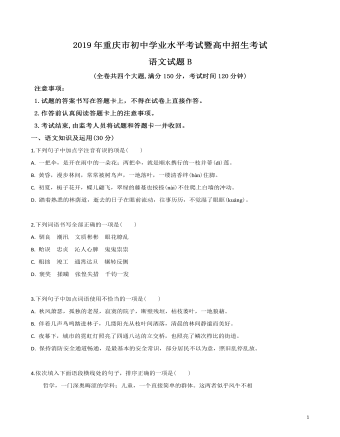
2019年重庆市中考语文试卷(B)及答案
国际上普遍将环境中小于5毫米的塑料颗粒定义为微塑料。这种物质在自然界本来是不存在的,完全是人造的结果。自然界中的微塑料有两种来源。一种是原生来源,即塑料在制造出来时,就是体积很小的塑料微粒,如牙膏磨砂洗面奶等日用品中的柔珠。





















